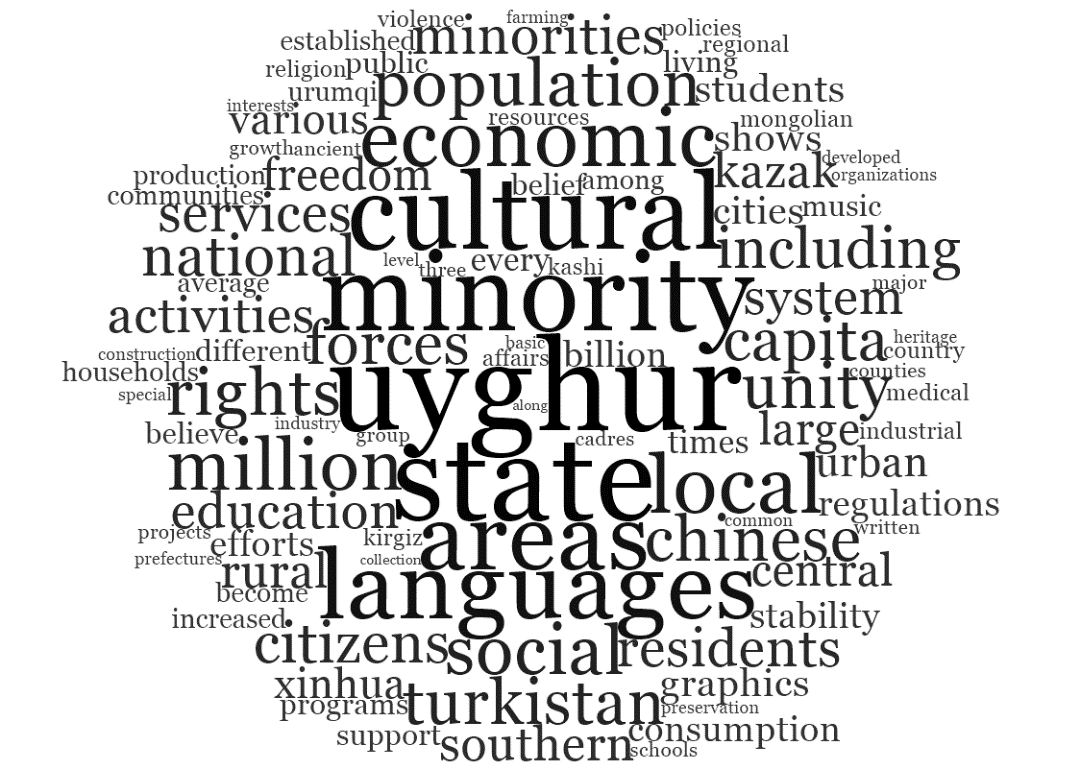Original document link: Click Here
Overview
The paper extols the progress and development in Xinjiang as an example of the success of China’s policies on ethnic minorities. Using Chinese government figures, it gives an overview of the economic development, industrial progress and social betterment. Highlighting the preservation and promotion of local cultural heritage is another key element of the text. The paper then gives an overview of the ethnic diversity of the region and focuses on the historical linkages of the Han people to modern-day Xinjiang. The integration of ethnic minorities is exemplified through increasing representation in the party.
“The number of Xinjiang’s cadres from minority ethnic groups was 46,000 in 1955, 67,000 in 1965, 93,000 in 1975, 202,000 in 1985, 272,000 in 1995, 340,000 in 2005 and 363,000 in 2008. The last figure accounts for 51.25% of the total number of cadres in Xinjiang.”
The paper also highlights the freedom of religious belief afforded to the people of Xinjiang
“According to corresponding laws and regulations, the autonomous region protects all normal religious activities held either at venues for religious activities or in believers’ own homes… However, the autonomous region shall ban, in accordance with the law, activities that make use of religion to intervene in the performing of administrative and judicial functions of the state, as well as education, marriage or civil lawsuits.”
The paper concludes by emphasizing the importance of safeguarding national unity and social stability for development and progress in Xinjiang. It gives an overview of the East Turkistan movement and its role in instigating separatist activities.
“the “East Turkistan” forces both inside and outside China created many riots and launched armed insurrection in their attempt to split the country… In 2004, the “East Turkistan” forces patched together the World Uyghur Congress (WUC) outside China. Since then, they have plotted and organized a number of separatist and sabotage actions.”
The paper concludes by re-emphasizing the progress made in Xinjiang while reiterating the threat of “terrorist activities organized by the “East Turkistan” forces aimed against the various ethnic groups of Xinjiang.”
| 15 most common words: | |
|---|---|
| Word | Count |
| uyghur | 47 |
| state | 45 |
| minority | 41 |
| cultural | 40 |
| areas | 37 |
| languages | 37 |
| economic | 32 |
| local | 32 |
| million | 29 |
| social | 28 |
| population | 27 |
| rights | 27 |
| chinese | 26 |
| turkistan | 26 |
| unity | 26 |
Word cloud:
(Minimum 5 letters)
